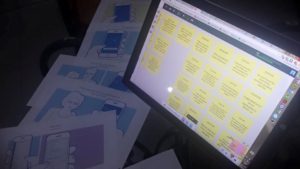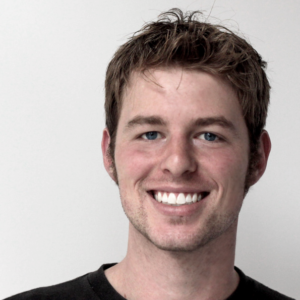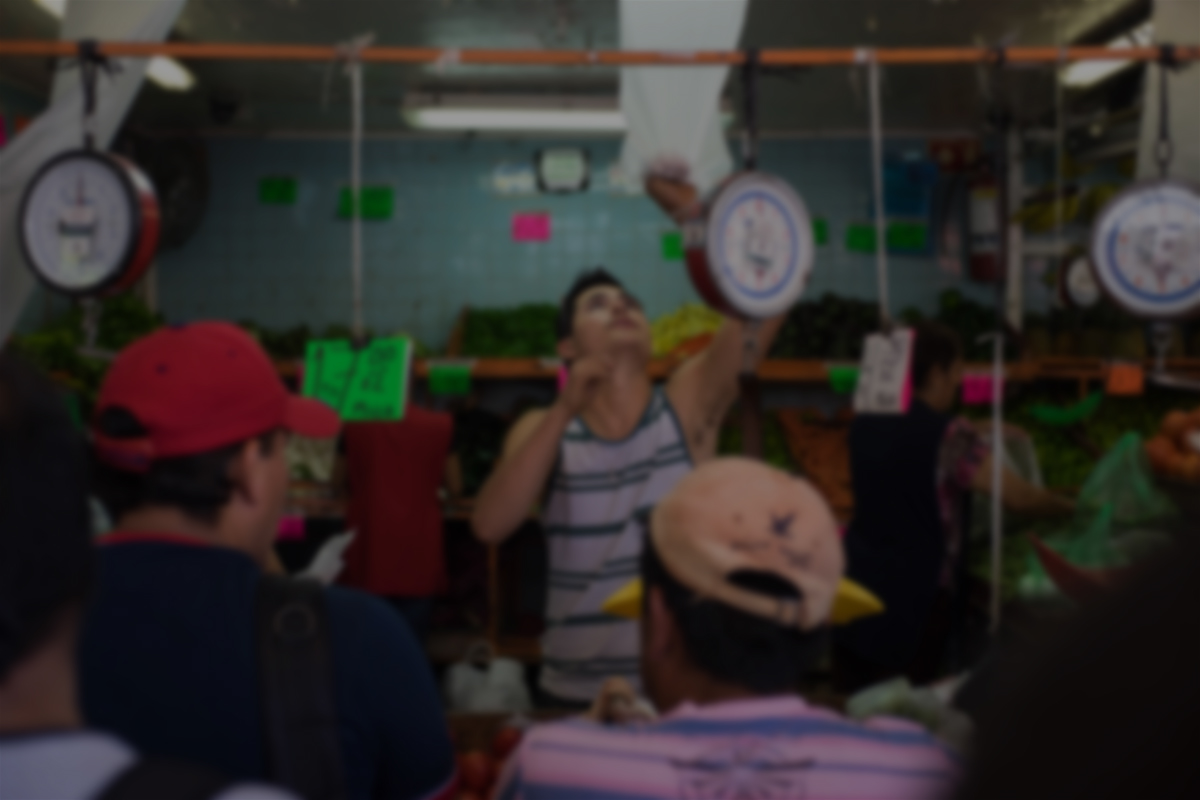You’ve done some hard thinking to see whether design research is right for your project and spent some time preparing your design research team with the information that they’ll need to be successful. Now it’s time for the fun part: riding along with the team to hear from your prospective customers themselves!
In this article, I capture some thoughts about what to expect from this process. This post will focus on the more practical aspects of a DR interview session, while my next post will talk a little more about the theory behind why we structure things this way.
Checklist
If you’re riding along for an interview, make sure to remember:
- Dress
- You’re dressed slightly nicer than the people you’re interviewing. Look clean, shirt tucked in, but remember that interview subjects may feel uncomfortable if you’re dressed considerably nicer than they are.
- Leave expensive jewelry or other flashy things at home.
- Equipment
- Unless they’ve specifically asked, the team brought all of the equipment they need.
- Cell phones should be on Airplane mode and tucked away for the interview. Laptops, tablets, and anything else distracting is tucked away in your bag or in the car.
- Be Polite
- This goes without saying. But is still worth saying.
- You are Part of the Team
- We want our participants to feel like everyone in the room is neutral. We usually do that by telling people that we are all researchers, completely detached from the product. Leave your business card in your pocket.
- The Moderator is the Boss
- Regardless of everyone’s title in the real world, when the team steps into the interview room, the moderator runs the show.
- The moderator will ask from time to time if anyone else on the team has questions – that is the proper time to clarify things that you’re unsure about or ask new questions that you’ve come up with.
- The moderator will tell everyone (often, including the interview participant) where to sit.
- If you have any questions about the process, don’t hesitate to ask the Moderator.
Re-read this checklist before the start of your first interview with the team. The rest of this post is just some details about what you can expect to see!
The morning of
Equipment:
If you’re riding along with a team for an interview, there is really nothing that you need to bring with you other than an open mind. The team will have all of the equipment necessary. It may be useful to make sure that you have a pen handy and something to take notes on. Sometimes the team will provide a sheet for you to capture notes on that follows the outline of the script, but it never hurts to be prepared!
Make sure your cell phone is off before you walk in, or better yet, leave it in the car. Same with briefcases, computers, and other things you may have with you. If you do need to bring these things in, keep them tucked away and don’t fidget with them during the interview.
Dress:
As a general rule, you want to look like you belong in the context of the interview, so to tune your dress to match your participants. If you are interviewing someone in their home, don’t wear a suit and tie! Wear something clean but casual: no t-shirts or shorts, and only nice, dark jeans. If you are interviewing people in an office environment, wear slacks and tuck in your button-down shirt. If you have any questions, ask the moderator what to wear.
Remember that you want your participants to feel comfortable and you send signals about your socio-economic class with what you wear. If you are interviewing people who make less than you, leave the Rolex and expensive jewelry at home. Many people are hyper-sensitive to these sorts of things, and they may feel uncomfortable or inferior or lie to try to impress you.
Introductions:
It is important to ALWAYS be courteous, professional, friendly, and engaging. The questions may not start until the confidentiality agreement is signed, but building rapport with the participant starts as soon as you walk in the door.
The Moderator will normally be the first to introduce themselves to the research participant before introducing her team. Researchers generally prefer to keep the company or client that they’re working for anonymous, as well as things like job titles – keep that business card in your pocket unless the Moderator says otherwise! If you find yourself invited along into the field with the research team, the Moderator may identify you as another person on her team just to keep things simple for the participant.
Sit Down, Set Up
After the team has been introduced, it is time to get set up. It is up to the Moderator to determine where everyone will sit. In a person’s home, this will usually be either around a kitchen table or a living room coffee table. Where everyone sits can make a difference in the flow interview but don’t worry, the Moderator will direct you where to go if it isn’t obvious. Generally, the Moderator will sit directly beside the participant with other team members around or close by.
Consent Paperwork
The Moderator will give a short explanation about why the team is here, the types of questions she will be asking, and an overview of how the process goes. After answering any questions that the participant has, it is time to get the forms signed – these typically include a confidentiality agreement and a Data-Consent agreement allowing the company to use recordings, video, and photographs from the interview in internal or external ways (depending on the project you’re on).
Once these forms are signed, the Note Taker will prepare the sound equipment, get out the camera and laptop, and the interview will begin!
During the Interview
It’s time to play detective! As you walk into a room, remember that a participant’s environment is an expression of themselves.
- How did they decorate the space?
- What did they hang over the mantle?
- Are they clean or sloppy? Seeing toys thrown about could mean they have children which could affect the way they live and make decisions.
- Is their mail sorted?
- What seems strange or out of place?
During the interview, we are all trying to best understand the rationale of our participant – this usually comes out of people’s stories. Try to differentiate between the details that people keep in and leave out of their stories. Do they mention price when they talk about things? Quality? Brands? Features?
Remember that we often judge brands similar to the ways we judge other people. How do they describe their friends and relatives? Are they sensitive about social status? Integrity?
In particular, pay attention to contradictions when they speak. As humans, we all contradict ourselves, usually without even noticing! These contradictions can be a key clue to understanding the cognitive dissonance between a person’s perception and reality. We aren’t trying to catch a participant in a lie and make them feel uncomfortable, but you may notice the moderator come back later in the interview and generally probe for an understanding on these contradictions.
Being polite
The most important thing is to be respectful of the person who is letting you in to their life and giving you their time and opinions.
Remember, the participant let a bunch of strangers into her home, office, or other part of her life. Most people don’t have an audience for two hours, and the quality of information we get is solely based on her feeling comfortable.
Pay Attention. Obvious signs of respect come from our show of attention. Leave the cell phone in your pocket – unless someone is dying there is NO reason you should be checking your email, texting, or doing anything else on your phone.
Don’t take any pictures in someone’s environment without asking – in general, it is best to leave this up to the moderator and the assistant anyways – they’ve given a lot of thought to how and when to point the camera.
Consider your Body Language. There are less obvious methods of showing respect that we need to consider as well. Be extra conscious of the situation that you are in and the subtle ways that a situation can shift based on your body language. Lean forward and act engaged when the participant is talking. Remember that the participant is ALWAYS right, so even if you disagree about something, never show it on your face.
Consider your Appearance. You may be of a different age, gender, socio-economic class, or ethnic background than the participant which may have its own sensitivities. As a 6’2″ man, I often tower above my research participants and have to find ways to not appear intimidating. People are also sensitive to signs of an income gap, so keep that brand new $800 smart phone in your pocket and out of sight.
This should go without saying, but I’ve actually had a client I brought along fall asleep in an interview I was conducting, so don’t do that either!
Post Interview Debrief
The post-interview debrief isn’t common for all DR teams, but having run them on some projects, I find them to be quite useful.

At MedicSana, we use Mural.ly when possible to make debriefs digital.
Directly after the interview, the team relocates to a coffee shop, hotel lobby, or other convenient spot for a debrief before joining the rest of the team (or rushing off to the airport). My favorite way to conduct a debrief is to set a timer for 10-15 minutes and, armed with sharpies and a stack of post-it notes, each member of the team scribbles as many insights as we can.
At MedicSana, we started conducting this process digitally using Mural.ly (as long as we had wif)i. After the timer goes off, we go around the table discussing these insights. These discussions are usually quite rich and, in themselves, lead to a bunch more insights.
After this point, the ride-along team member is free to go and the moderator and assistant will file the audio, photos, and forms for synthesis and prepare for the next interview.
What’s Next?
In my next post, I dive a little deeper into the theory of design research. Why do we conduct things the way we do? What are the psychological factors that come into play here? How do we control our biases in these situations? How do we shape our process specifically to solve design problems?
How am I doing? What questions do you have about this process? Feel free to shoot me some feedback or questions on twitter @kyle__Becker.
More about Me
 I’m currently looking for my next opportunity as a design researcher or scrum product owner. Shoot me an email at gnefkow87@gmail.com.
I’m currently looking for my next opportunity as a design researcher or scrum product owner. Shoot me an email at gnefkow87@gmail.com.
After graduating from the University of Kansas in 2011 with a degree in Industrial design, I joined frog design as an interaction designer for three years before raising funding and rolling on to MedicSana as full-time CEO, designer, and scrum product owner. I have my Product Owner (PSPO I) and Scrum Master (PSM I) certifications. My full work history is on my linkedin page, or download my resume.
In my free time, I read quite a bit about behavioral economics and on my blog, Knowledge in Society, I write about various topics that discuss the relationship between design research, behavioral economics, and entrepreneurship, including a multi-part introduction to design research. I also love photography, check out my photography portfolio here!


